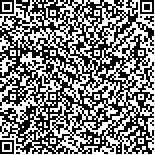孔晴,郭壮丽,高呈飞,等.小脑间歇性θ脉冲刺激对脑卒中后下肢功能障碍患者步行功能的影响[J].中华物理医学与康复杂志,2024,46(3):226-231
扫码阅读全文

|
| 小脑间歇性θ脉冲刺激对脑卒中后下肢功能障碍患者步行功能的影响 |
|
| |
| DOI:10.3760/cma.j.issn.0254-1424.2024.03.007 |
| 中文关键词: 间歇性θ脉冲刺激 小脑 下肢功能障碍 脑卒中 |
| 英文关键词: Theta burst stimulation Cerebellum Lower limb dysfunction Stroke |
| 基金项目:山东省医药卫生科技发展计划项目(2013ws0268) |
|
| 摘要点击次数: 5183 |
| 全文下载次数: 3653 |
| 中文摘要: |
| 目的 观察小脑半球间歇性θ脉冲刺激(iTBS)对脑卒中后下肢功能障碍患者步行功能的影响,并对其可能的机制进行初步探讨。 方法 将符合纳入标准的脑卒中后步行功能障碍患者30例按随机数字表法分为试验组和对照组,每组患者15例。2组患者均给予常规康复治疗,在此基础上,试验组在每次常规康复训练之前给予iTBS干预,对照组则仅给予假iTBS干预。iTBS治疗每日1次,每次共产生600个脉冲,用时200 s,每周训练5 d,连续治疗3周。治疗前和3周的治疗后,采用Berg平衡量表(BBS)、Fugl-Meyer评估量表下肢部分(FMA-LE)、改良Barthel指数(MBI)、功能性步行量表(FAC)分别评估2组患者的平衡功能、下肢运动功能、日常生活活动能力和步行功能,同时对其进行步态分析,并采集2组患者运动诱发电位的波幅和潜伏期,以评估其皮质脊髓兴奋性。 结果 治疗后,试验组患者的BBS评分、FMA-LE评分、MBI评分、FAC分级、步幅、步速、步频、摆动期占步行周期百分比、MEP的波幅和潜伏期均显著优于组内治疗前和对照组治疗后,差异均有统计学意义(P<0.05);对照组除治疗后的摆动期占步行周期百分比为(27.83±4.82)%,与组内治疗前的(27.18±6.30)%比较,差异无统计学意义外(P>0.05),剩余上述各项指标均显著优于组内治疗前,差异均有统计学意义(P<0.05)。 结论 小脑半球iTBS可改善脑卒中后下肢功能障碍患者的步行功能,其机制可能与小脑通过某种通路来调控大脑皮质的脊髓兴奋性有关。 |
| 英文摘要: |
| Objective To observe any effect of intermittent theta burst stimulation (iTBS) of a cerebellar hemisphere on the walking of stroke survivors with lower limb dysfunction, and to explore its possible mechanism. Methods Thirty stroke survivors with walking dysfunction were randomly divided into an experimental group and a control group, each of 15. Before their daily routine rehabilitation, the control group received fake iTBS while the experimental group was given 600 pulses of iTBS over 200s. The experiment continued 5 days a week for 3 weeks. The Berg Balance Scale (BBS), the Fugl-Meyer lower extremity assessment (FMA-LE), the Modified Barthel Index (MBI) and Functional Ambulation Categories (FAC) were used before and after the treatment to evaluate the subjects′ balance, lower extremity motor function, walking and ability in the activities of daily living. Gait analysis was also performed. The amplitude of motor evoked potentials (MEPs) and the cortical silent period (CSP) were also noted to assess corticospinal excitability. Results After the treatment, the average BBS, FMA-LE and MBI scores, FAC grading, stride length,stride speed,stride frequency,and the percentage of swing period in the walking cycle, as well as MEP amplitude and latency had improved significantly in the experimental group. All were then significantly better, on average, than in the control group. The control group also demonstrated significant improvement in all of the outcomes except the percentage of swing period in the walking cycle. Conclusion iTBS of the cerebellum can improve the walking of stroke survivors with lower limb dysfunction. The mechanism may be related to the cerebellar regulation of spinal cord excitation of the cerebral cortex. |
|
查看全文
查看/发表评论 下载PDF阅读器 |
| 关闭 |
|
|
|